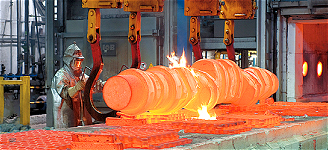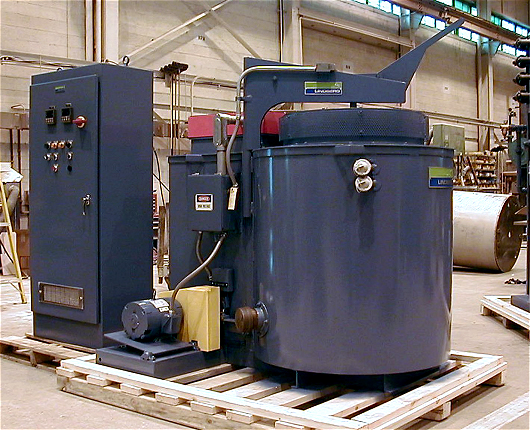
Tempering Furnace is a heat treatment equipment used to improve the hardness and mechanical properties of materials. Mainly used in metal processing, forging, casting and other fields, it softens the metal and makes it easier to process by heating the metal to a certain temperature, maintaining it for a certain time, and finally cooling it quickly.



Tempering Furnace can perform low-temperature tempering heat treatment of 150℃-250℃, medium-temperature tempering heat treatment of 350℃-500℃, and high-temperature tempering heat treatment of 500℃-700℃. It mainly provides tempering heat treatment for alloy steel products and various metal parts, as well as heat treatment of solid melting, annealing, aging for light alloys, such as aluminum alloys, copper materials.
Tempering Furnaces can heat treat metals before surface coating, making its surface more absorbable to the coating material. The tempering furnace uses a steady heating and cooling method to ensure that the coating evenly covers the entire surface. Stress occurs in metals during machining processes or after welding. Tempering Furnace can remove these stresses and prevent problems such as breaking or stretching during metal use.
Tempering furnaces can help control and adjust the metal quenching speed and temperature. By adjusting the heating time and temperature, the metal material can be brought to the ideal quenching state to obtain the required hardness and strength. The tempering furnace mainly changes the structure of the metal by heating the metal to a certain temperature, then maintaining it for a certain period of time, and finally softening the metal through rapid cooling.
A tempering furnace usually consists of a furnace body, burners, heaters, temperature monitoring and control equipment, etc. The furnace body is usually made of high-temperature refractory materials, while burners and heaters are used to provide heating energy.
Tempering furnaces are divided into: Continuous Hot Air Tempering Furnaces, Vacuum Tempering Furnaces, All-fiber Trolley-type Tempering Furnaces, and All-fiber Pit-type Tempering Furnaces.
The shell of the tempering furnace is welded by national standard steel plates and structural steel. The furnace lining is made of lightweight high-aluminum energy-saving insulation bricks, combined with aluminum silicate fiber wool composite furnace lining insulation. The electric heating elements are designed for long life and are arranged on both sides of the furnace and at the bottom of the furnace. The furnace door is lifted and lowered electrically or hydraulically, and there is a circuit breaker protection device that stops power supply for heating when it is opened.
Customized design according to the actual requirement of customers.
The computer temperature control system can control the tempering process with high precision and automatically complete the tempering heat treatment from entering the furnace to coming out of the furnace. The heating elements are made of high-temperature resistance alloy wires wound into ribbon and spiral shapes, which are hung on the furnace side and place on the wire bricks of the trolley, and are fixed with high-alumina porcelain nails and wire bricks to prevent them from falling out.
It adopts full fiber furnace lining, which has fast temperature rise, low power consumption, high heat utilization rate and good energy saving effect. The stainless steel mesh belt runs smoothly and has stepless speed regulation. Continuous automatic operation can greatly improve labor productivity and reduce labor intensity. The complete automatic control system can set any temperature according to process requirements within the furnace temperature of 500°C, with a temperature control accuracy of ±3℃.






| Type |
Furnace Chamber Size |
Rated Voltage |
Rated Power |
Rated Temp. |
Heat Up time |
Max. Loading |
| RJ2-75-6 | 950x1200 | 380 | 75 | 650 | ≤1.5 | 1500 |
| RJ2-105-6 | 1200x1400 | 380 | 80 | 650 | ≤1.5 | 2500 |
| RJ2-135-6 | 1300x1500 | 380 | 135 | 650 | ≤1.5 | 3500 |
| RJ2-150-6 | 1400x1800 | 380 | 150 | 650 | ≤1.5 | 4000 |
| RJ2-180-6 | 1500x1800 | 380 | 180 | 650 | ≤1.5 | 4200 |
*The output will vary according to different materials, feed particle size and other factors
Save Time! Get A Detailed Quotation Quickly.
